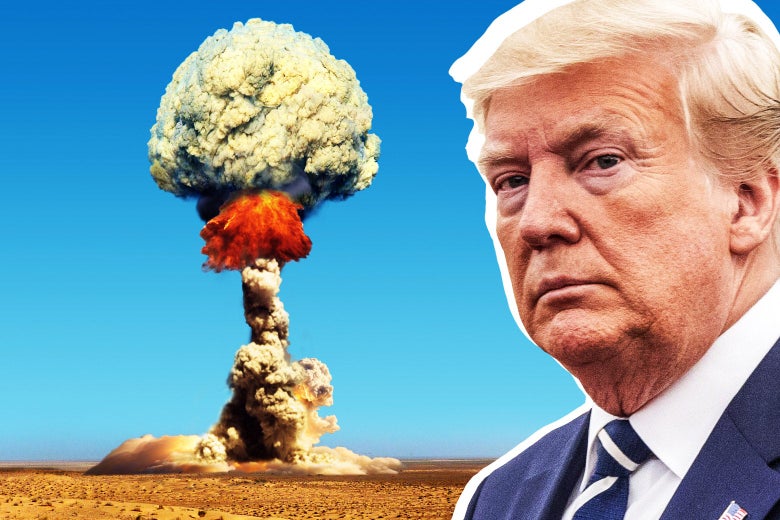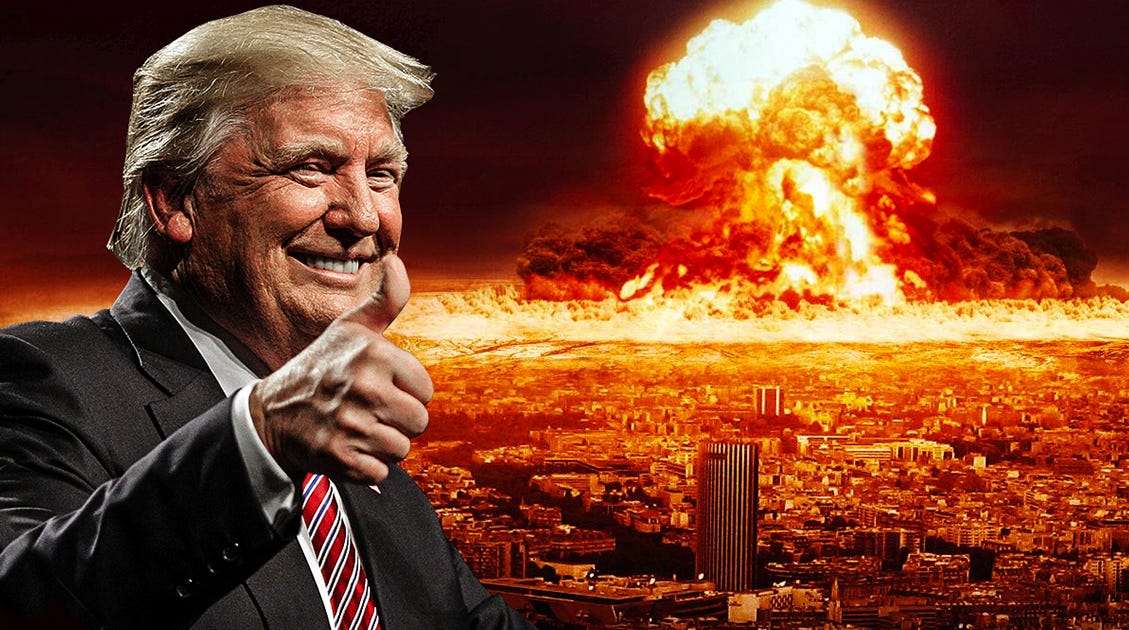
Officials Believe Test Would Push Russia, China in Negotiations
(May 22, 2020) — How does the US get Russia and China to the negotiating table? Senior administration officials came up the idea of carrying out the first US nuclear test explosion since 1992, and this conversation is still ongoing.
Carrying out nuclear tests is a hugely provocative move on the global scale, and yet the Trump Administration thought it could “prove useful” in trying to get Russia and China into trilateral nuclear talks.
This probably was also informing the administration in accusing, without evidence, both Russia and China of conducting nuclear tests in secret. Global monitoring makes secret tests all but impossible, but allegating them of having done so would be cover for the US to do it too.
Officials said the December discussion on the matter didn’t end with any agreement to conduct a test, but that it is an “ongoing conversation” that they keep going back to as a possible idea in response to threats from Russia and China.

Trump Administration Discussed Conducting First US Nuclear Test in Decades
John Hudson, Paul Sonne / The Washington Post
(May 22, 2020) —The Trump administration has discussed whether to conduct the first US nuclear test explosion since 1992 in a move that would have far-reaching consequences for relations with other nuclear powers and reverse a decades-long moratorium on such actions, said a senior administration official and two former officials familiar with the deliberations.
The matter came up at a meeting of senior officials representing the top national security agencies last Friday, following accusations from administration officials that Russia and China are conducting low-yield nuclear tests — an assertion that has not been substantiated by publicly available evidence and that both countries have denied.
A senior administration official, who like others spoke on the condition of anonymity to describe the sensitive nuclear discussions, said that demonstrating to Moscow and Beijing that the United States could “rapid test” could prove useful from a negotiating standpoint as Washington seeks a trilateral deal to regulate the arsenals of the biggest nuclear powers.
The meeting did not conclude with any agreement to conduct a test, but a senior administration official said the proposal is “very much an ongoing conversation.” Another person familiar with the meeting, however, said a decision was ultimately made to take other measures in response to threats posed by Russia and China and avoid a resumption of testing.
The National Security Council declined to comment.
During the meeting, serious disagreements emerged over the idea, in particular from the National Nuclear Security Administration, according to two people familiar with the discussions. The NNSA, an agency that ensures the safety of the nation’s stockpile of nuclear weapons, didn’t respond to a request for comment.
The United States has not conducted a nuclear test explosion since September 1992, and nuclear nonproliferation advocates warned that doing so now could have destabilizing consequences.
“It would be an invitation for other nuclear-armed countries to follow suit,” said Daryl Kimball, executive director of the Arms Control Association. “It would be the starting gun to an unprecedented nuclear arms race. You would also disrupt the negotiations with North Korean leader Kim Jong Un, who may no longer feel compelled to honor his moratorium on nuclear testing.”
The United States remains the only country to have deployed a nuclear weapon during wartime, but since 1945 at least eight countries have collectively conducted about 2,000 nuclear tests, of which more than 1,000 were carried out by the United States.
The environmental and health-related consequences of nuclear testing moved the process underground, eventually leading to a near-global moratorium on testing in this century with the exception of North Korea. Concerns about the dangers of testing prompted more than 184 nations to sign the Comprehensive Nuclear-Test-Ban Treaty, an agreement that will not enter into force until ratified by eight key states, including the United States.
President Barack Obama supported the ratification of the CTBT in 2009 but never realized his goal. The Trump administration said it would not seek ratification in its 2018 Nuclear Posture Review.
Still, the major nuclear powers abide by its core prohibition on testing. But the United States in recent months has alleged that Russia and China have violated the “zero yield” standard with extremely low-yieldor underground tests, not the type of many-kiloton yield tests with mushroom clouds associated with the Cold War. Russia and China deny the allegation.
Since establishing a moratorium on testing in the early 1990s, the United States has ensured that its nuclear weapons are ready to be deployed by conducting what are known as subcritical tests — blasts that do not produce a nuclear chain reaction but can test components of a weapon.
US nuclear weapons facilities have also developed robust computer simulation technologies that allow for modeling of nuclear tests to ensure the arsenal is ready to deploy.
The main purpose of nuclear tests has long been to check the reliability of an existing arsenal or try out new weapon designs. Every year, top US officials, including the heads of the national nuclear labs and the commander of US Strategic Command, must certify the safety and reliability of the stockpile without testing. The Trump administration has said that, unlike Russia and China, it isn’t pursuing new nuclear weapons but reserves the right to do so if the two countries refuse to negotiate on their programs.
The deliberations over a nuclear test explosion come as the Trump administration prepares to leave the Treaty on Open Skies, a nearly 30-year-old pact that came into force in 2002 and was designed to reduce the chances of an accidental war by allowing mutual reconnaissance flights for members of the 34-country agreement.
The planned withdrawal marks another example of the erosion of a global arms-control framework that Washington and Moscow began hashing out painstakingly during the Cold War. The Trump administration pulled out of a 1987 pact with Russia governing intermediate-range missiles, citing violations by Moscow, and withdrew from a 2015 nuclear accord with Iran, saying Tehran wasn’t living up to the spirit of it.
The primary remaining pillar of the arms-control framework between the United States and Russia is the New START pact, which places limits on strategic nuclear platforms.
The Trump administration has been pushing to negotiate a follow-on agreement that includes China in addition to Russia, but China has rejected calls for talks so far.
Trump’s presidential envoy for arms control, Marshall Billingslea, warned that China is the “midst” of a major buildup of its nuclear arsenal and “intent on building up its nuclear forces and using those forces to try to intimidate the United States and our friends and allies.”
One US official said a nuclear test could help pressure the Chinese into joining a trilateral agreement with the United States and Russia, but some nonproliferation advocates say such a move is risky.
“If this administration believes that a nuclear test explosion and nuclear brinkmanship is going to coerce negotiating partners to make unilateral concessions, that’s a dangerous ploy,” Kimball said.
Posted in accordance with Title 17, Section 107, US Code, for noncommercial, educational purposes.